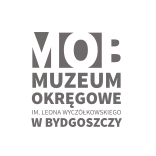Graphic studio
Wyczółkowski became involved in graphic art relatively late. It is believed that his first attempts took place in Kraków around 1900. In that time, encouraged by his friend, the great art collector and critic Feliks Jasieński aka Manggha, he started to experiment with graphic techniques. Initially, he was trying to work with metal techniques (etching, soft-ground etching), algraphy and rarely used fluoro- etching due to the brittleness of glass stencil and high toxicity of necessary preparations. Finally, Leon Wyczółkowski became excited about ithography, remaining faithful to this technique until the end of his life.
Lithography is a flat print technique, where drawing is made with a fat lithographic pencil or lithographic ink on a properly prepared stone. Depending on the fact if grainy or smooth texture should be seen on a print, the stone is polished or rubbed with coarse sand.

Close

Graphic tools
Leon Wyczółkowski had a tool kit for the preparation of lithographic stone, which he frequently treated as a bas-relief. Some tools are typical graphic tools, e.g. smoothers or files for preparation of big areas, needles for cutting small, flat lines as well as knurling wheels for deeper carving. Among the objects donated by Franciszka Wyczółkowska, there are also tools built by the master, including a scraper consisting of a set of needles. A metal, round box standing near the press is printing ink.
Close

Lithographic press
Lithographic press of Leon Wyczółkowski donated by Franciszka Wyczółkowska to the museum. It consists of two parts: a simple, wooden table and a proper, iron press mounted to it, made in the Warsaw firm of “Jakub Fajans and the Company” according to an inscription on the plate installed to the head. The iron frame consists of a base supported on six feet, a moving truck, on which a lithographic stone was placed, and a head with a screw and a gear, which from top pressed moistened paper down to the stone original.
Close

Lithographic stone
Lithographic stone is one of the several stones donated by Franciszka Wyczółkowska to the museum in 1937. It is a square limestone block with polished surface, on which a partial drawing depicting a tree was applied made by lithographic pencil. Tests of pencil softness and wideness are visible in the margin. The work is unfinished.
Close

Lithographic tub
Lithographic tub is a simple device used for etching and drying the lithographic stone. It consists of two parts, a wooden table and a proper, wooden tub with rounded, oblique edges, lined inside and on edges with metal sheet. The tub is supplied with streamers, which are used for drying the stone placed in the tub.


